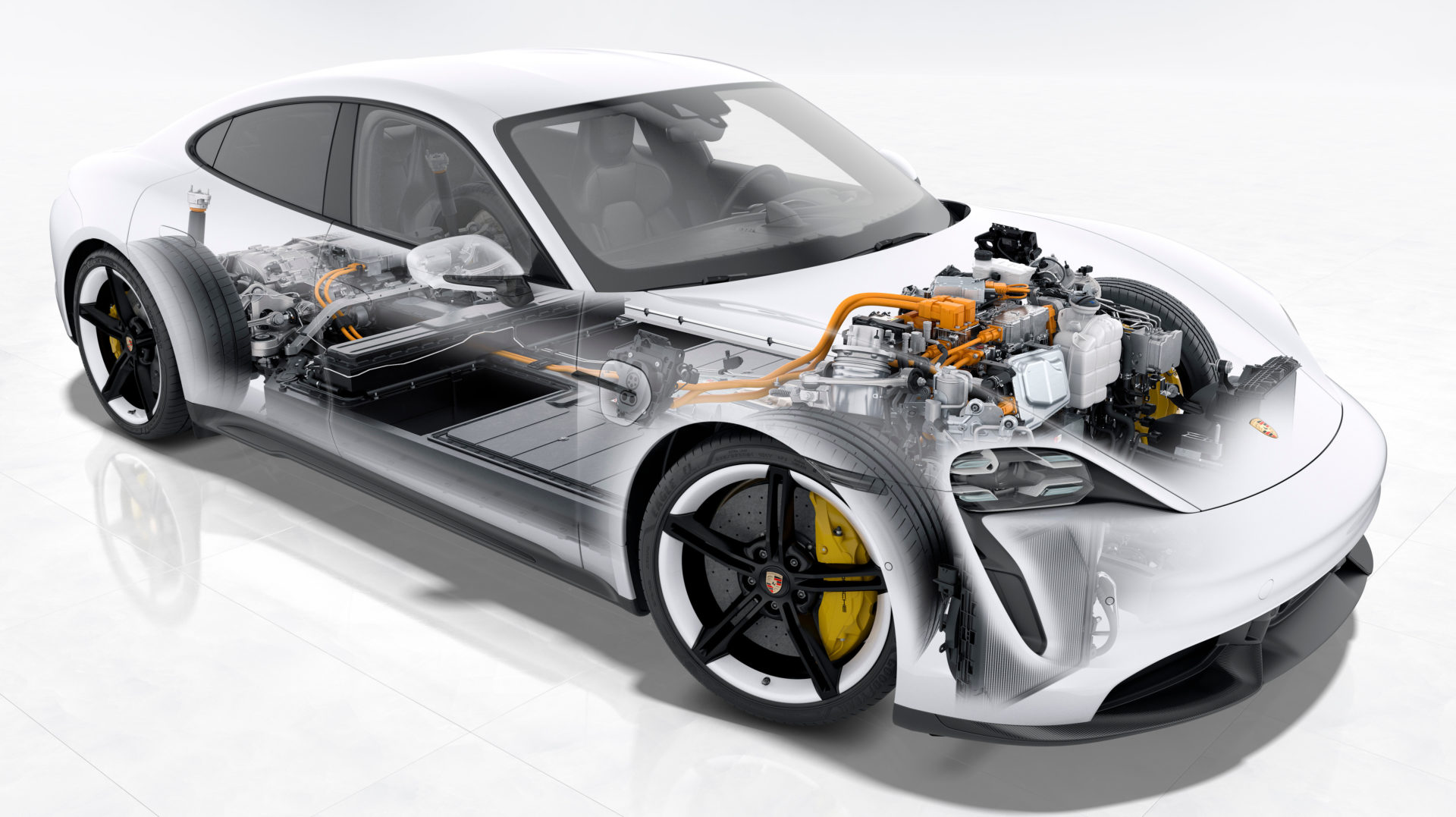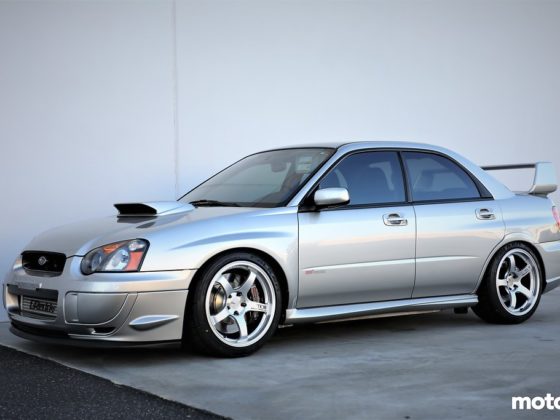
Tesla’s basic design is using an aluminum cooling ribbon that snakes between the cells in the module. A thermal gap pad covers the cooling snake to make contact with the side of the cells. The snake is roughly half the height of the cell and only makes contact with a small percentage of the circumference of the cell. The first-generation Model S battery module only had one snake going through the entire module. This is really bad. As the coolant enters the snake at the beginning of the module, it starts to pick up heat. By the time the coolant has reached the end of the module, the coolant is much warmer. Therefore, the battery cells at the end of the snake are much hotter than the cells at the beginning of the module. As Nissan Leaf owners found out, the hotter the cells get, the shorter they live. So within the first generation Model S battery module, one could expect the battery cells at the end of the cooling snake to have less capacity over time vs the cells at the beginning. So this design has a lack of contact surface area for heat conduction along with poor cell temperature distribution. It’s still better than a Nissan Leaf. Tesla made an upgrade to the Model S module by fitting two snakes in there which probably improved the cooling about 50% and reduced the difference in temperature between the hottest and coldest battery cells in the module which increases battery life. The Model 3 battery module design has something like 7 snakes all running in parallel straight down the module. Hence why the Model 3 has much improved performance on track and with charging. Porsche’s stated goal with the Taycan was repeatable performance use as they know that’s where Tesla falters. Quicker charging is also a result of having a system that can be driven hard for a long time. As I stated, I don’t think there’s anything impressive about the Taycan cooling system. So, there has to be something else going on that allows the Taycan to driver harder and charge faster than anything else on the market.
This is where we have to step back and look at the entire system. In this case, it seems Porsche going to the 800V system is the primary differentiation from everyone else. Doing an 800V based vehicle architecture must have been at great expense to Porsche because all the existing EV powertrain parts out there are for 400V systems. Therefore, Porsche ended up designing a lot of new parts instead of being able to use more off-the-shelf parts. To understand where 800V versus 400V comes into play, we have to become familiar with Joule heating (also known as Ohmic heating).
Any electrical conductor has an internal resistance. For example, copper has a lower electrical resistance than aluminum. When you push electrical current through the conductors, some of the current turns into heat due to the resistance of the conductor. This is Joule heating. Remembering our basic equations about DC electrical current, Power = Volts (V) x Amps (I). Volts = Amps x Resistance (R). P = V*I, V = I*R. After a little rearranging, P = I^2*R. Battery cells have an internal resistance too. So, you can see that the heat (power) that the battery cooling system has to reject from the battery cells is a function of the current squared times the resistance.

I found numbers for the quantity of cells and capacity of the Taycan and Model 3 battery packs. Accuracy may be off a little, but it clearly illustrates the benefit of Porsche using the 800V system. A quick note, ‘400V’ and ‘800V’ are not true numbers. Li-ion cells have a nominal voltage around 3.6-3.7 volts, a peak voltage of 4.2V and a end of charge of around 3.0V. So, the nominal voltage of the Model 3 pack is around 360V and the Taycan around 720V. I found numbers for the time to charge for the stated range of State of Charge (SOC) and calculated the average kW and therefore amps. I tried to find similar SOC range to minimize the variables. Anyway, notice the Taycan charges at about 50% higher power than the Model 3 but at a current that’s about 1/3 less. Because Joule heating is to the square of the current, the heat the Taycan has to reject compared to the Model 3 is about half. So, even though the Taycan doesn’t have a stellar battery thermal system, it only has to reject about half the heat compared to the Model 3.
Okay, that isn’t really the whole picture. If you recall from high school physics again, wiring resistors (i.e. battery cells in this case) in series increases the resistance of the circuit by the sum of the resistances (R1 + R2 + R3…). If you wire resistors in parallel, the resistance is the summation of the reciprocals of the resistances (1/R1 + 1/R2 + 1/R3…). Therefore, to get to 800V, Porsche has to wire twice as many cells in series doubling the resistance of a single 800V circuit of battery cells compared to a 400V. So what’s the answer?
Porsche’s pack level resistance may be lower because it has a magnitude fewer cells. I’m assuming the Taycan battery modules are essentially the same as those in the Audi e-tron which uses 12 pouch cells of 60Ah capacity each. The cylindrical cells in the Model 3 are around 5Ah each. Doing some quick math, the Model 3 needs 12 2170 size cylindrical cells to equal the capacity of one pouch cell in the Taycan. Maybe we can assume one massive cell has less resistance than 12 smaller ones wired together. Also, every battery cell has two electrical joints which means two spots of additional resistance. The Model 3 has about 10x more battery cell electrical joints. There are a number of other factors like the resistance of the HV connectors, the sizing of the HV cables and electrical busbars and things like that. But 10x more battery cells and joints is a big magnitude difference in the resistance summation game. The higher individual capacity of the pouch cells may be the significant contributor to the lower overall pack resistance compared to the Model 3 in addition to the system operating at 800V.

Another system level consideration is this gap between the battery modules in the pack. The gap is there to allow a place for the feet of the rear passengers. Passengers are the next heaviest thing in the car, so having people sit lower reduces the center of gravity. It also allows the roof line of the car to stay lower for better aero. It’s just a pain in the ass for the battery hardware engineers to do the rearrangement of the battery modules, cables, cooling, etc.




17 comments
I think aluminium ammonia heat pipes are going to be a big part of high density battery cooling (if they aren’t already). They are light, safe, and proven. They can be easily shaped and fitted, plus, the materials are cheap and recyclable.
Pouch/prismatic cells are also much easier to heat and cool than cylinder cells although I wonder how Porsche deals with gas swell in the pouches.
I came up with something along those lines already….
https://patents.google.com/patent/US10153524B2/en?oq=US10153524B2
I didn’t know you worked at Faraday Future! What other places have you worked at and keeping from us!?
I knew others must have thought of heat pipes, they have been used to cool all kinds of electronics and aluminium ammonia pipes have been used for decades to cool spacecrafts and military avionics.
I was thinking about moving heat to a water radiator right next to the cells then cool the water with a standard radiator, yours skips water completely which is great for weight sounds like a nightmare to manufacture/service unless you are transferring heat from pipe to pipe in shorter sections or using individual radiators.
Heat pipe manifolds, that’s probably the more novel idea hahaha.
Just think of it as an A/C system. Condenser (front radiator), evaporator (heat source/battery pack), and refrigerant running between the two. All established technologies for decades. Honestly, take this i3/Taycan cooling plate which is already designed for refrigerant. Just plumb it to a standard front automotive A/C condenser and you’re done for a 100% passive cooling system. Now to sub cool below ambient and to handle high power loads, you’d need to add the chiller. Say the pack is cooler than ambient and you don’t want to heat it up, just put some solenoids in the lines to cut the flow of refrigerant. If you want to heat up the pack, could run the compressor like a heat pump in residential applications. Anyway… I’m out of automotive now for the day job. Using heat pipes in my current job!
Porsche uses a chiller for the Taycan.
It already uses one for all the last e-hybrid models !
The schematic used here is just a simple representation of the battery cooling.
It’s allready much better than that in the e-hybrid models.
For the Taycan and range/charging option, Porsche has a range simulator online and shows the charging options too.
A Ionity charger will charge a Taycan in 30min for 8€ in Europe.
The range is not the greatest or most impressive, but most Porsche owners won’t really need more. And with the network of ionity chargers, and “destination charging” stations (luxury places and Porsche centers that have an agreement with Porsche and Turbo-chargers available for charging Taycans at 350Kw for free), range won’t be a problem.
One option will be critical for Taycan owner : Getting the Connect service which will unlock a lot of functions very useful for long trips (Charging planners the pre-conditions the battery for fast charging prior to arrival at the charging station etc…).
As a Porsche Tech / Hybrid Tech / Smart Mobility Expert I’m more worried about the 4 screens failing inside than the reliability or longevity of the powertrain !
Ben, thanks for the info! It’ll be interesting to see what’s in there for real once that information becomes available. No joke about all those screens!
I found a picture from my last hybrid training of an opened 388v Panamera E-hybrid batterie.
https://i53.servimg.com/u/f53/13/27/76/86/img_7631.jpg
You can see that the cooling system is already very intricate !
All the black strip are the wiring for the individual cells, with temp sensors etc.
Thanks for the link of pic. Looks like two layers of prismatic cells with 3 layers of cooling plates. I feel bad for the engineers that had to do the coolant plumbing!
so this thing gets a double wishbone suspension but the Cayman and 911 have to make do with the McCrap strut…
Excellent article. Well written and great presentation of information. I think the Taycan seems like a logical step up from the now 8yr old Model S, but at what cost? I still haven’t heard a peep about Taycan MaRP which usually means it’s ludicrously expensive. I’d be shocked if it wasn’t 50% more expensive than the closest equivalent model S.
It’ll be between $150k-$200k depending on the model. Keep in mind that’s how much the Panamera goes for. If I had the money, I’d go Taycan all day over the Tesla. I really dislike the Tesla interiors. But, I don’t even have Tesla Model 3 money….. so mute subject, ha!
Super interesting article, however I think your explanation of Ohmic heating being reduced with higher pack voltage is misleading. For a fixed cell, series/parallel configuration doesn’t affect loss in a battery pack, only cell count and total output/input power (at least when it comes to ohmic losses within the cells themselves). You somewhat hint at this “okay that really isn’t the whole picture”, but as far as I can tell that isn’t the picture at all. I^2 numbers are meaningless without the R. If Porsche took the same pouch cells and arranged them in a 400V pack architecture, their loss would be the same at a given output or charging power. I think the main source of increased performance (which you allude to) is decrease ESR of the pouch cells. They most likely traded absolute capacity for performance (thicker anode/cathode, etc.). Regardless, a super interesting and informative read as usual!
Hey Derek! You’re right… I came to the same conclusion about the ESR. I was writing a bit stream of consciousness, and I was like, I’m missing something… Would be nice to break down a pack and take real measurements. Hope you’re doing well up there!
I hope that Porsche doesn’t forget the Arctuc silver thermal paste! Or is that for the next-gen Taycan (sorry, that name still gives me the shivers.)
https://www.newegg.com/arctic-silver-as5-3-5g/p/N82E16835100007
Will ‘enthusiasts’ be hacking the cooling system and pumping LN2 through it? Don’t say it can’t be done.
https://www.stirlingcryogenics.eu/en/products/custom-closed-loop-cooling-systems/closed-loop-liquid-nitrogen-cooling-systems
A good ole water sprayer on the condenser would help!
Kindly notify me on the latest EV battery technology design and longest range capability